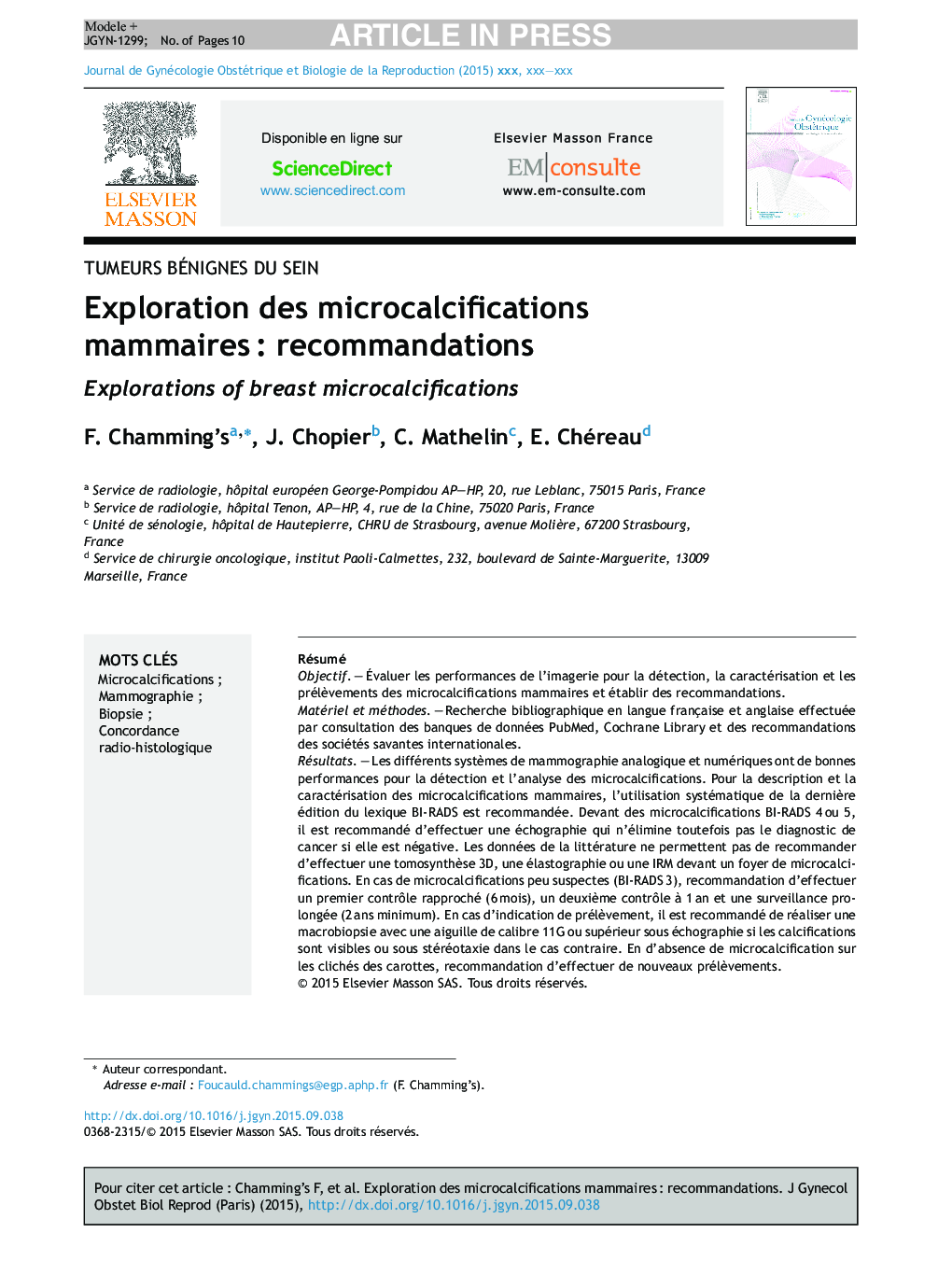| Article ID | Journal | Published Year | Pages | File Type |
|---|---|---|---|---|
| 3272185 | Journal de Gynécologie Obstétrique et Biologie de la Reproduction | 2015 | 10 Pages |
Abstract
Digital mammography (DR [Direct Radiography] and CR [Computed Radiography]) and screen-film mammography demonstrate good performances for the detection and the characterization of breast microcalcifications. Systematic use of the 2013 edition of the BI-RADS lexicon is recommended for description and characterization of microcalcifications. Faced with BI-RADS 4 or 5 microcalcifications, breast ultrasound is recommended but a normal result does not eliminate the diagnosis of cancer and other examination should be performed. Literature review does not allow recommending digital breast tomosynthesis, elastography or MRI to analyze microcalcifications. In case of probably benign microcalcifications (BI-RADSÂ 3), six months, one year and at least two years follow-up are recommended. In case a biopsy is indicated, it is recommended to use a vacuum-assisted macrobiopsy system with 11-gauges needles or bigger. If no calcification is visible on the radiography of the specimen, it is recommended to obtain additional samples.
Related Topics
Health Sciences
Medicine and Dentistry
Endocrinology, Diabetes and Metabolism
Authors
F. Chamming's, J. Chopier, C. Mathelin, E. Chéreau,
